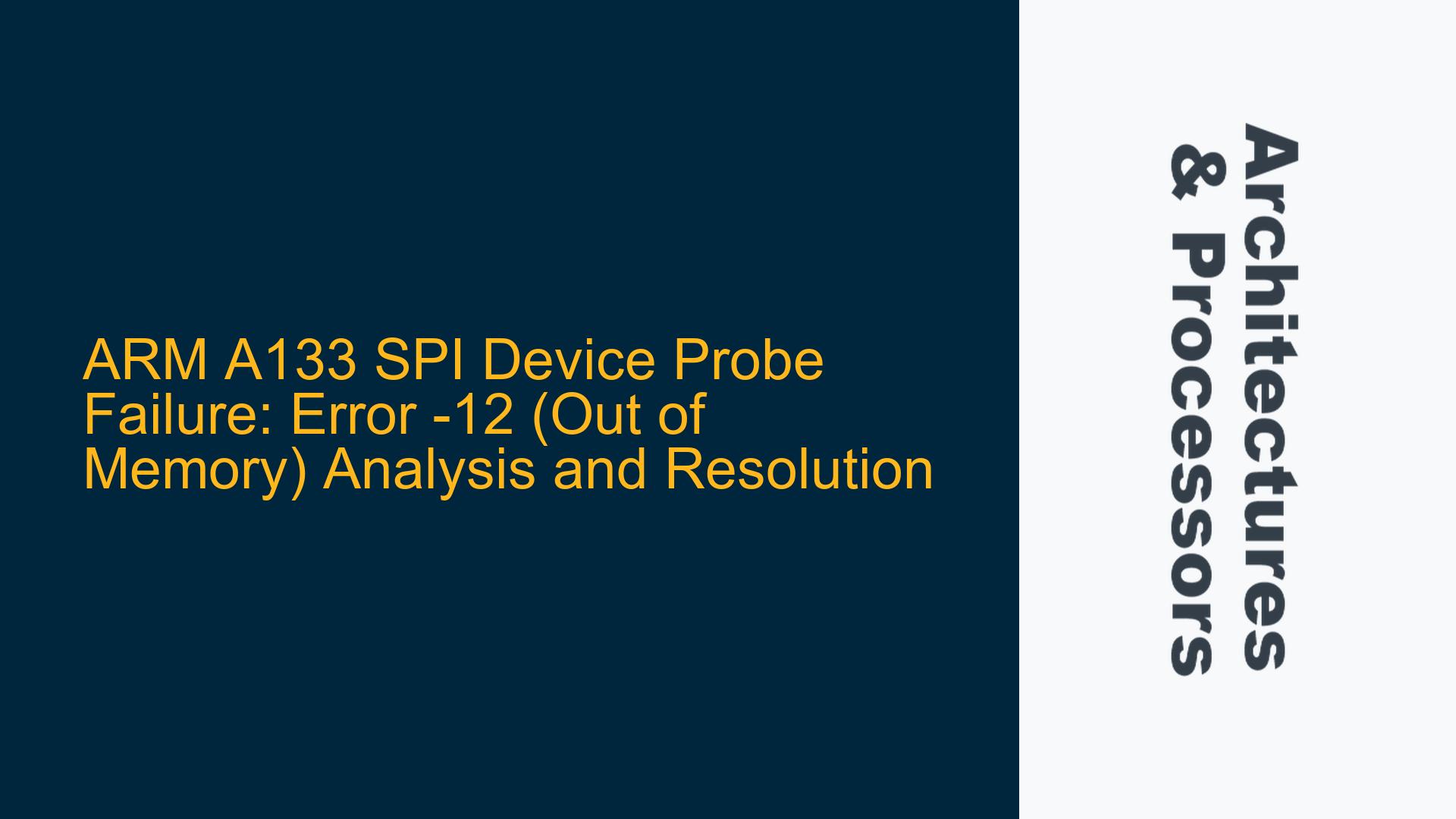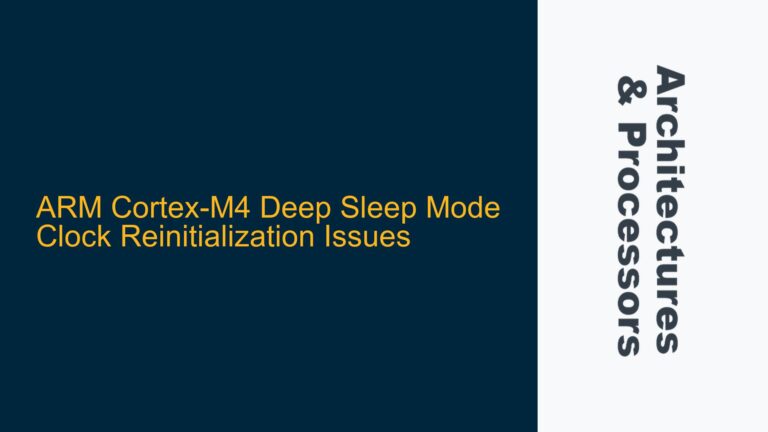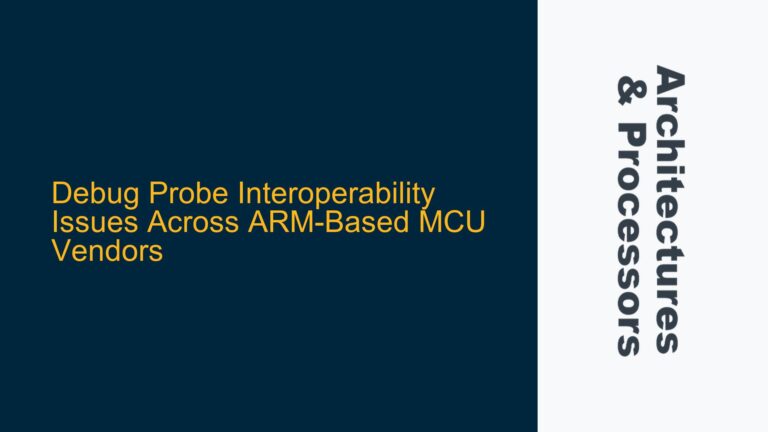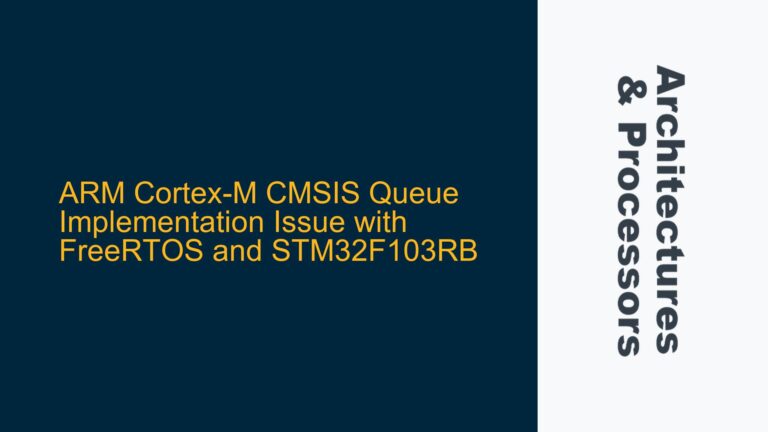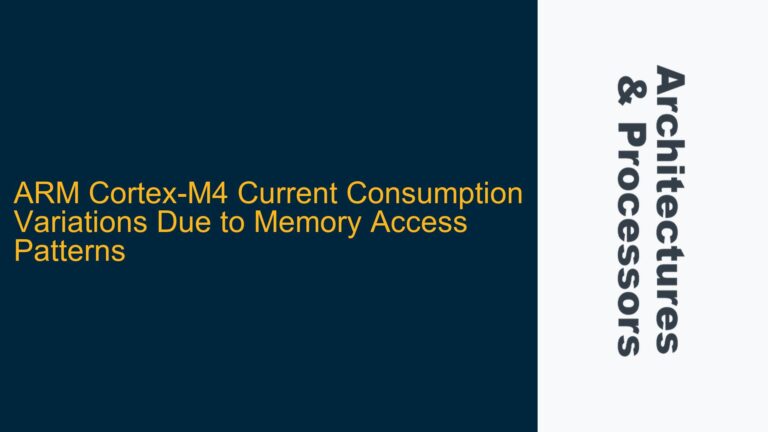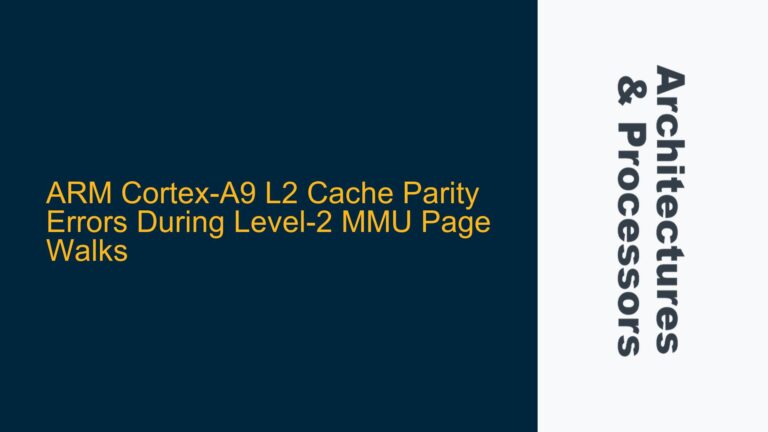ARM A133 SPI Device Probe Failure Due to Memory Allocation Issues
The ARM A133 processor, part of the Allwinner sun50iw10p1 family, is a powerful SoC often used in embedded systems for its balance of performance and power efficiency. However, during the kernel boot process, users may encounter an error when probing an SPI device, specifically the ST7735 display controller. The error message "probe of spi2.0 failed with error -12" indicates an out-of-memory condition. This error is particularly perplexing given the system’s substantial memory configuration of 2GB RAM and 16GB of flash storage. The issue lies not in the physical memory availability but in the kernel’s memory management and allocation mechanisms.
The SPI subsystem in the Linux kernel is responsible for managing communication with SPI devices. When the kernel attempts to probe an SPI device, it allocates memory for data structures, buffers, and other resources required for the device’s operation. The error -12 (ENOMEM) signifies that the kernel is unable to allocate the necessary memory, despite the system having ample physical memory. This discrepancy suggests a deeper issue related to memory fragmentation, Contiguous Memory Allocator (CMA) constraints, or misconfigurations in the device tree or kernel settings.
The device tree configuration provided in the discussion shows the SPI2 controller and the ST7735 display device node. The SPI2 controller is configured with a clock frequency of 100 MHz, and the ST7735 device is set to operate at a maximum frequency of 32 MHz. The device tree also specifies pin configurations for the SPI interface, including clock, MOSI, MISO, and chip select lines. Despite these configurations, the kernel fails to probe the SPI device, indicating that the issue is not with the device tree’s syntax but with the underlying memory allocation mechanisms.
Contiguous Memory Allocator (CMA) Constraints and Kernel Memory Fragmentation
The primary cause of the error -12 in this context is related to the Contiguous Memory Allocator (CMA) and kernel memory fragmentation. CMA is a mechanism in the Linux kernel that allocates contiguous blocks of physical memory, which are essential for DMA (Direct Memory Access) operations. SPI devices, including the ST7735 display controller, often require contiguous memory for efficient data transfer between the device and the system memory.
In the ARM A133 processor, the kernel may fail to allocate contiguous memory if the CMA pool is too small or fragmented. The default CMA size in many kernel configurations is often insufficient for high-performance SPI devices, especially those requiring large buffers or high-speed data transfer. Additionally, memory fragmentation can exacerbate the issue, as the kernel may struggle to find a contiguous block of memory even if the total available memory is substantial.
Another potential cause is the misconfiguration of the SPI driver or the kernel’s memory management settings. The SPI driver may request a large contiguous memory block that exceeds the available CMA pool. This can happen if the driver is not optimized for the specific hardware or if the kernel’s memory management settings are not tuned for the system’s memory configuration. For example, the kernel may be configured with a small CMA size, or the memory zones may be improperly defined, leading to inefficient memory allocation.
The kernel’s memory management subsystem also plays a crucial role in this issue. The Linux kernel uses a buddy allocator to manage physical memory, which can lead to fragmentation over time. When the kernel attempts to allocate a large contiguous block of memory, it may fail if the memory is fragmented, even if the total free memory is sufficient. This is particularly problematic in systems with high memory usage or long uptimes, where memory fragmentation is more likely to occur.
Implementing CMA Size Adjustments and Kernel Memory Management Optimizations
To resolve the error -12 issue, several steps can be taken to optimize the kernel’s memory management and ensure sufficient contiguous memory is available for the SPI device. The first step is to increase the CMA size in the kernel configuration. This can be done by modifying the kernel command line or the device tree to specify a larger CMA pool. For example, adding "cma=256M" to the kernel command line will allocate a 256 MB CMA pool, which should be sufficient for most SPI devices.
The following table summarizes the key kernel parameters and their recommended values for optimizing memory allocation:
| Parameter | Recommended Value | Description |
|---|---|---|
| cma | 256M | Allocates a 256 MB Contiguous Memory Allocator pool for DMA operations. |
| vmalloc | 512M | Increases the virtual memory allocation limit for kernel modules and drivers. |
| memblock | debug | Enables debugging information for memory block allocation. |
| page_alloc.shuffle | 1 | Enables page shuffling to reduce memory fragmentation. |
In addition to adjusting the CMA size, it is essential to optimize the kernel’s memory management settings. Enabling memory compaction can help reduce fragmentation by moving allocated memory pages to create larger contiguous blocks. This can be done by setting "vm.compaction_proactiveness=100" in the sysctl configuration. Additionally, enabling "page_alloc.shuffle=1" can randomize page allocations, reducing the likelihood of fragmentation.
Another critical step is to ensure that the SPI driver is correctly configured and optimized for the ARM A133 processor. This may involve modifying the driver to request smaller contiguous memory blocks or using scatter-gather lists to handle fragmented memory. The driver should also be tested with different CMA sizes to determine the optimal configuration for the specific hardware.
Finally, it is crucial to monitor the kernel’s memory usage and fragmentation levels during system operation. Tools such as "vmstat," "slabtop," and "dmesg" can provide valuable insights into memory allocation patterns and help identify potential issues. Regularly rebooting the system can also help mitigate memory fragmentation, especially in long-running embedded systems.
By implementing these optimizations, the error -12 issue can be resolved, ensuring that the SPI device is successfully probed during kernel boot. This will enable the ARM A133 processor to fully utilize its memory resources and provide reliable operation for SPI devices such as the ST7735 display controller.
